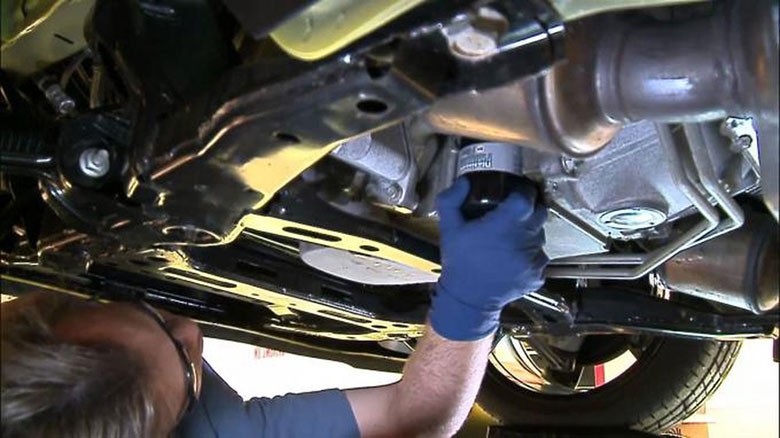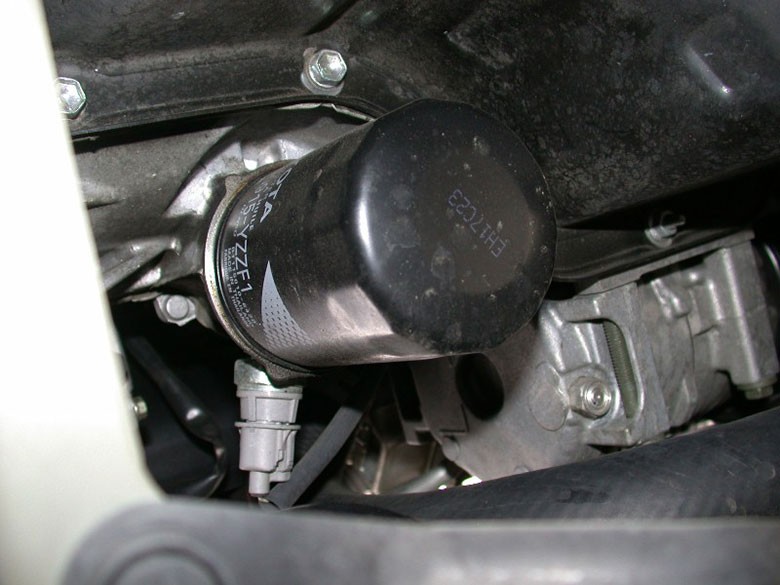Truck oil filters are essential for ensuring stable and durable vehicle operation. This article provides detailed information about truck oil filters, their functions, replacement methods, and how to identify genuine products.
 Close-up of a truck oil filter, emphasizing the need for regular maintenance
Close-up of a truck oil filter, emphasizing the need for regular maintenance
The truck oil filter, also known as an oil filter cup, is responsible for removing impurities and debris from the fuel, helping the engine run smoothly and prolonging its lifespan. Proper maintenance and replacement of the oil filter are crucial but often overlooked.
What is a Truck Oil Filter? And Its Functions
Truck oil filters are typically cylindrical and located under the engine. They consist of three main parts: a one-way valve, a filter screen, and a safety valve. The filter screen can be made of metal, paper, or a centrifugal filter core. Lubricating oil enters the filter housing under the action of the one-way valve, flows through the filter into the middle of the housing. The filter screen retains impurities and debris generated during operation.
 Close-up of a truck engine and oil filter, highlighting the engine's smooth operation
Close-up of a truck engine and oil filter, highlighting the engine's smooth operation
The oil filter helps maintain oil cleanliness, ensuring the engine is well-cooled and lubricated, saving fuel, and reducing friction between engine parts. If the oil filter is not working effectively, the vehicle will quickly deteriorate, run rough, consume more fuel, and have a reduced lifespan.
Truck Oil Filter Replacement Guide
To ensure the oil filter works well, follow these maintenance and replacement procedures:
Regular Oil Filter Replacement
The oil filter will become clogged with dirt and debris after a period of use. Replace the oil filter regularly every 10,000 km to avoid clogging the filter screen, ensure engine lubrication, and prevent damage. In addition, clean the oil filter after 1-2 months of use.
Drain Oil Before Removing the Filter Cup
Before replacing the old oil filter, remove the old filter cup and drain the excess oil. This step should be performed by a skilled technician to avoid errors. Do not remove or install when the engine is hot; wait 5-10 minutes for the engine to cool down. Use specialized tools to remove the oil filter.
Clean the Engine Before Replacing the Oil Filter
Wipe the engine and the oil filter mounting location with a soft cloth to prevent rust and sediment. Lubricate the filter with a thin layer of oil to prevent metal particles from adhering to it.
Choose the Right Oil Filter Cup
Choose an oil filter that matches the vehicle’s technical specifications. The filter size must fit the engine to avoid looseness during operation. Before pouring oil, attach the filter cup cap and place a funnel over the cup opening to prevent oil spillage.
 A selection of truck oil filters from reputable brands, showcasing quality and reliability
A selection of truck oil filters from reputable brands, showcasing quality and reliability
Choose a Reputable Supplier
To avoid buying fake, counterfeit, or poor-quality oil filters, go to reputable showrooms for replacement. Customers should inquire about product returns or warranties.
Distinguishing Genuine and Poor-Quality Oil Filters
- Structure: Genuine oil filters have a dual structure, a fine filter layer, and effective anti-clogging. Counterfeit products are often made of thin materials that are easily clogged or torn.
- Gasket: Genuine oil filter gaskets are made of high-temperature resistant rubber, are non-stick, tough, and durable. Counterfeit gaskets easily deform at high temperatures, quickly fail, and cause leaks.
- Valve: Genuine oil filters have tight one-way and safety valves that help filter oil quickly and reduce leakage. Fake products have loose, non-tight valves.
The truck oil filter plays an important role in maintaining stable operation and prolonging the engine’s lifespan. Regular and proper oil filter replacement is necessary to ensure vehicle performance.
